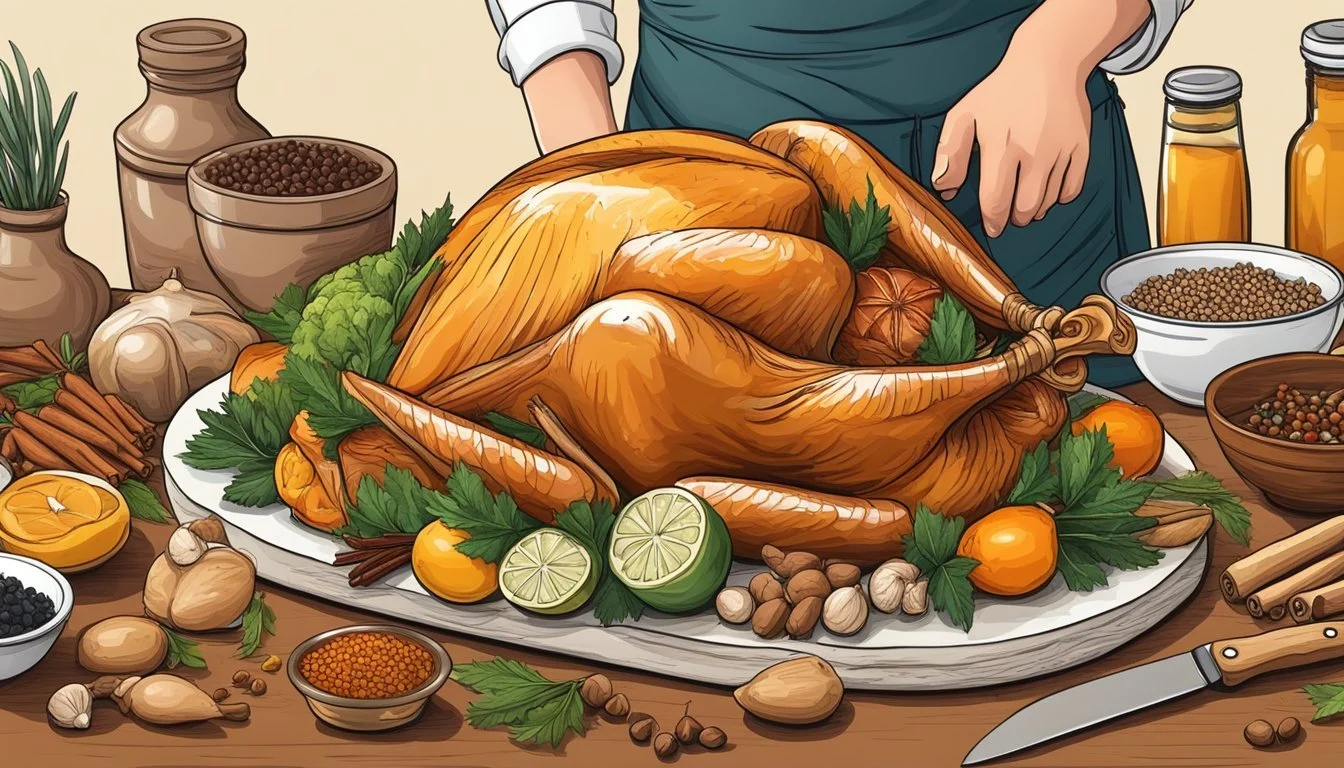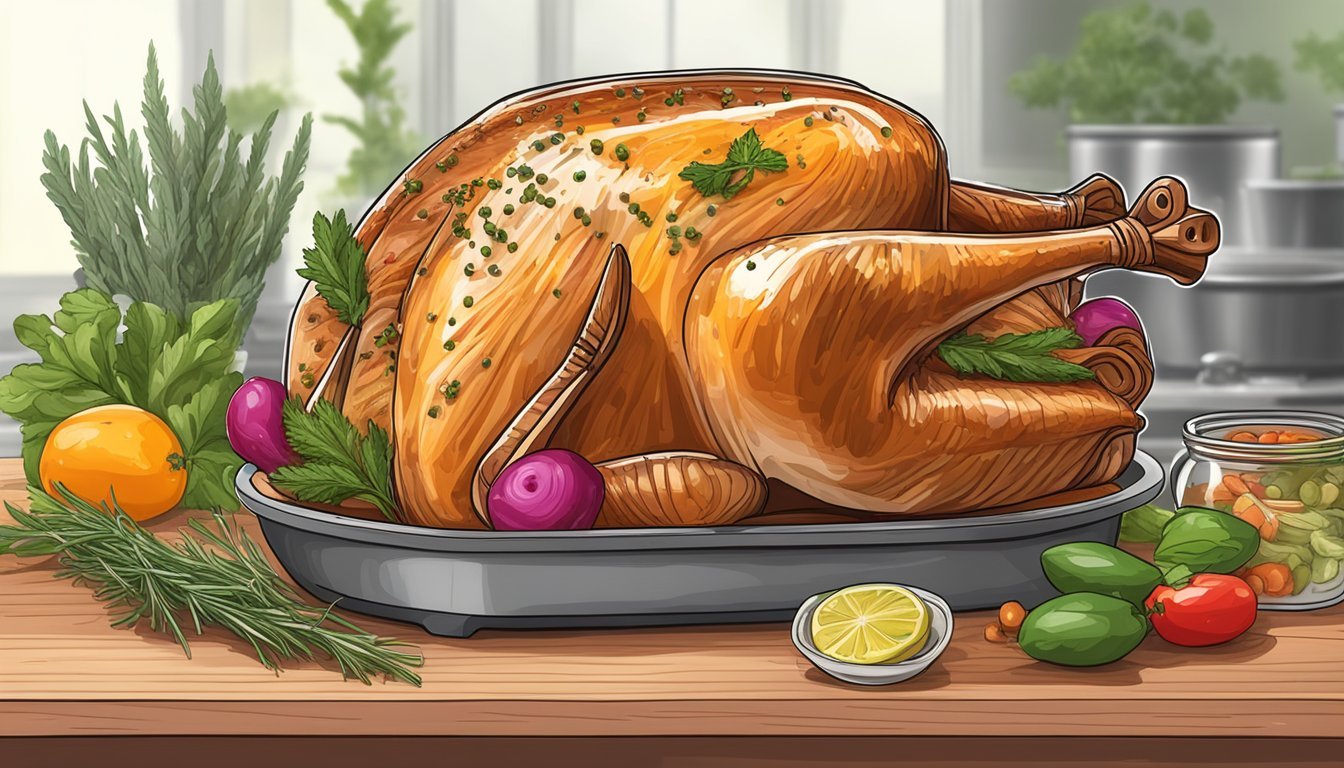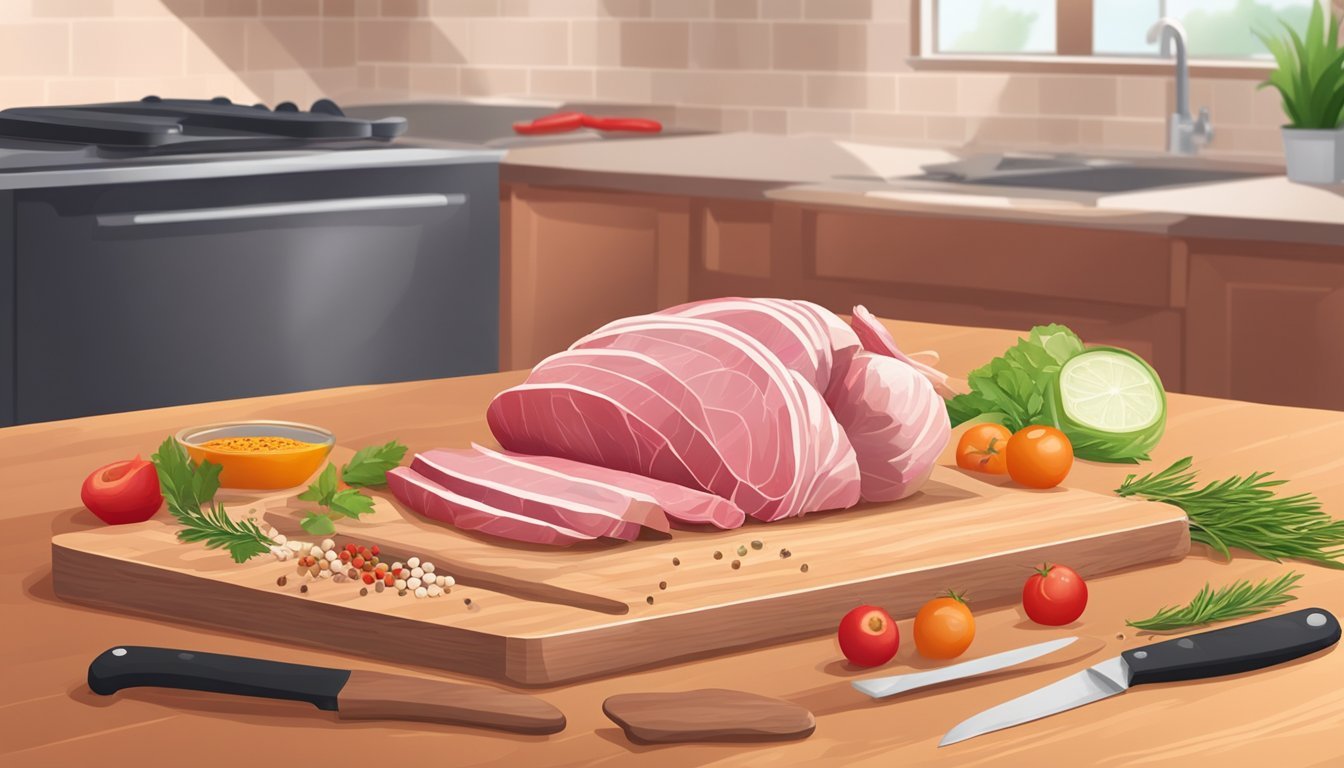Crafting Homemade Turkey Jerky
Your Ultimate Guide to DIY Dried Meat Snacks
Crafting homemade turkey jerky is an accessible and rewarding process that delivers a healthy, protein-packed snack suitable for any time of day. This lean source of high-quality protein not only offers a nutritious alternative to store-bought snacks but also provides the opportunity for culinary creativity with customizable flavors. Whether one prefers sweet, smoky, or spicy jerky, the customization options are nearly endless.
A step-by-step tutorial streamlines the approach to making turkey jerky at home. Essential steps include choosing the right cut of turkey, slicing it to the proper thickness, marinating it to infuse flavors, and then dehydrating it to perfection. With attention to detail, home chefs can ensure their jerky has the ideal texture and taste.
Homemade turkey jerky serves not just as a delicious snack but as a healthier option due to the control over ingredients. By selecting quality turkey meat and tailoring the marinade ingredients, individuals can create a snack that aligns with their dietary preferences and avoids the preservatives often found in commercial jerky. The process, while requiring some patience during the marination and drying phases, rewards with a satisfyingly chewy and flavorful snack.
Selecting the Right Turkey
The key to a successful batch of turkey jerky hinges on starting with top-quality turkey breast. Opting for lean turkey meat not only ensures a protein-rich snack but also extends shelf life by reducing the fat content that can spoil.
Choosing Quality Meat
When selecting turkey meat for jerky, one should focus on turkey breast due to its low fat content and high protein density. It is vital to look for freshness and quality. The breast should have a pinkish hue with no signs of discoloration. Additionally, one must ensure the lean nature of the turkey meat; excess fat can lead to quicker spoilage and can affect the jerky's texture.
Key Qualities Description Color Pinkish hue, no discoloration Freshness Recently processed, minimal preservatives Lean Minimal visible fat, should feel firm Texture Consistent, without tough connective tissues
Prepping and Slicing the Turkey
Before slicing, the turkey breast must be prepared properly. This involves trimming any residual fat to avoid rancidity. For slicing, one should use a sharp knife to create uniform slices, which are crucial for even drying and consistent marinating. Uniformity in slice thickness ensures that all pieces dehydrate at a similar rate, preventing some from becoming too dry or remaining undercooked.
To achieve uniformity, slices should aim for:
Thickness: 1/4 – 1/8 inch (about 3–6 mm)
Width: Consistent to preference
A well-prepared turkey breast, trimmed of excess fat and sliced evenly, lays the foundation for perfect turkey jerky.
Marinating the Turkey
A pivotal stage in making turkey jerky is the marination process, which infuses the meat with flavors and prepares it for drying. The choice of marinade and the duration of marination directly influence the flavor profile and the tenderness of the jerky.
Creating the Marinade
A flavorful marinade is the foundation of delicious turkey jerky. Here is a basic recipe to get started:
Soy sauce: 1 cup
Worcestershire sauce: 1/2 cup
Apple cider vinegar: 1/4 cup
Honey: 2 tablespoons
Seasonings:
Salt: 1 teaspoon
Ground black pepper: 1 teaspoon
Garlic powder: 1 teaspoon
Onion powder: 1 teaspoon
Cayenne pepper: 1/4 teaspoon
Combine all ingredients in a large bowl, stirring until the honey dissolves and the seasonings are well incorporated. For a more intense flavor profile, one can adjust the quantity of each seasoning or add other preferred spices.
Marinating Process
After the marinade is prepared, the next step is to ensure the turkey is fully immersed in the flavor-enhancing liquid:
Place the thinly sliced turkey into a resealable plastic bag.
Pour the marinade over the turkey slices, making sure each piece is coated evenly.
Seal the bag tightly, removing as much air as possible to maximize contact between the marinade and meat.
Refrigerate for a minimum of 8 hours, though many recipes suggest marinating overnight for a more intense and deep flavor.
During this time, the marinade not only works to impart flavors but also begins to tenderize the turkey, resulting in a jerky that is flavorful throughout and has the proper chewy texture once dried. Regular turning of the bag ensures the marinade works on all the turkey slices equally.
Drying the Jerky
Drying is a crucial step in turkey jerky making, as it affects the jerky's shelf life and texture. Proper technique ensures safe consumption and the desired chewiness.
Setting Up the Dehydrator
When using a dehydrator, it's important to lay out the turkey strips on the trays without them touching, to allow for even drying. The temperature should be set to 165°F (74°C), consistent with food safety practices to prevent bacterial growth. The drying times can vary, often ranging from 4 to 8 hours, and should be adapted based on the desired level of dehydration and texture.
Using an Oven for Drying
For those without a dehydrator, an oven can suffice at its lowest temperature setting—usually between 170°F to 200°F (77°C to 93°C). Place turkey strips on a wire rack over a baking sheet to encourage air flow around the meat. Drying in an oven may take approximately 3 to 8 hours. Check the jerky periodically and remove it once it reaches the preferred texture.
Ensuring Even Drying
Achieving even drying is critical for both taste and preservation. Rotate the trays in the dehydrator or the position of the racks in the oven throughout the drying process. This helps in avoiding under-dried or overly dry spots, leading to a uniformly dried batch of turkey jerky. The consistency of texture and level of dehydration should be routinely inspected until the jerky bends without breaking, indicating it's perfectly dried.
Storing and Preserving Turkey Jerky
To maintain freshness and extend the shelf life of homemade turkey jerky, proper cooling and storage are crucial. These measures protect the jerky from spoilage and ensure it remains safe and flavorful for consumption.
Cooling and Storage Tips
Once the turkey jerky is finished dehydrating or cooking, it should be allowed to cool completely at room temperature. Cooling is essential to prevent condensation when the jerky is placed into storage containers, as excess moisture can lead to mold growth. After cooling, the jerky should be stored in airtight containers to protect it from both moisture and air exposure.
Here are key cooling and storage tips:
Cool completely: Ensure the jerky is entirely cooled to avoid moisture buildup.
Choose proper containers: Use airtight containers or vacuum-sealed bags for storage.
Maximizing Shelf Life
The shelf life of turkey jerky can be significantly extended by following specific storage techniques. For short-term storage, the jerky can be kept in a refrigerator where it will remain fresh for up to 1 to 2 weeks. For long-term storage, freezing the jerky in vacuum-sealed bags can maintain its quality for several months.
Consider these points for maximizing shelf life:
Refrigerator (1-2 weeks):
Place jerky in clean, airtight containers or sealed bags.
Keep refrigerated at or below 40°F (4°C).
Freezer (several months):
Store in vacuum-sealed bags to prevent freezer burn.
Use within 6 to 8 months for best quality.
It should be noted that turkey jerky made without preservatives will have a shorter shelf life than store-bought varieties containing preservatives. Always inspect jerky for changes in odor, flavor, and appearance before consumption to ensure it is still fresh.
Serving and Nutritional Information
When it comes to enjoying homemade turkey jerky, it's not just about the savory taste; nutritional value is a significant benefit. This section breaks down the health advantages and serving ideas for turkey jerky.
Health Benefits
Turkey jerky is a rich source of protein, which is essential for muscle repair and growth. An average serving, typically one ounce, provides about 9-14 grams of protein, which is highly satiating and helps in maintaining muscle mass. With minimal fat content and a lower calorie count than many other snacks, turkey jerky stands as a healthier alternative. It's also reasonably low in sodium—especially if homemade as one can control the amount used during preparation—making it a heart-friendly snack.
In terms of its nutritional value, turkey jerky contributes a variety of vitamins and minerals. It's a good source of zinc and iron, which are important for a healthy immune system and blood oxygenation.
Nutrient Amount per Serving Calories 70-100 kcal Protein 9-14 g Sodium 400-600 mg Fat 1-3 g
Serving Suggestions
Turkey jerky is a versatile snack that can be enjoyed on its own or as a part of various dishes. Some prefer it straight from the pack for a quick protein boost, which is particularly beneficial post-workout to aid in muscle recovery. It can also be cut into pieces and added to salads or wraps for a nutritious and flavorful meal addition. For a balanced diet, it's recommended to pair turkey jerky with a source of complex carbohydrates and fibrous vegetables, ensuring a well-rounded intake of macronutrients.
One should be mindful of portion sizes; a standard serving size is about 1 ounce, which should suffice for a satisfying snack. It's important to consume jerky in moderation as part of a diverse and balanced die.
Customization and Flavor Variations
Creating homemade turkey jerky allows for endless customizations to suit individual taste preferences. One can adjust the spice levels, experiment with different herbs, or infuse their jerky with unique flavors like maple, teriyaki, or smoked.
Experimenting With Spices
When it comes to spices, the key is to start with a base of salt and black pepper, and then add layers of complexity. Here's a simple table format to guide the experimentation:
Spice Effect Suggestion Smoked Paprika Adds a smoky flavor Start with 1 teaspoon for a mild smokiness Hot Sauce/Sriracha Brings heat 1 to 2 tablespoons depending on desired spice level Liquid Smoke Mimics traditional smoking A few drops to 1/2 teaspoon will suffice
One should adjust these quantities based on their preferences and the quantity of meat being prepared.
Alternative Marinade Ideas
Marinades serve as the flavor foundation for turkey jerky, and there are myriad options beyond the traditional soy and Worcestershire sauce base. For those who enjoy sweet and savory profiles, adding maple syrup provides a rich depth of flavor. Begin with a quarter cup of maple syrup mixed into the marinade for a subtle hint of sweetness.
For an Asian twist, teriyaki sauce can be the centerpiece of the marinade. Combine a half cup of teriyaki sauce with garlic, ginger, and sesame oil to transport taste buds to the Far East. Moreover, for a simple change-up, substitute teriyaki with soy sauce in the same quantity for a more subdued but equally delicious variation.
It’s important to remember that the longer the turkey resides in the marinade, the more intense the flavors become. Typically, a marination period of 12-24 hours will result in a well-infused jerky.
Troubleshooting Common Issues
When crafting homemade turkey jerky, it's essential to pay close attention to the texture, flavor, and the equipment used. These are often the root of common issues.
Texture and Dryness Concerns
If the jerky turns out too tough or too dry, reviewing the dehydration process is crucial. Over-dehydration is a frequent problem and can be mitigated by:
Checking the jerky periodically: Begin inspecting at the halfway mark of the recommended drying time.
Using parchment paper: To ensure even drying, line the baking sheet with parchment paper for optimal heat distribution.
Individuals may also tenderize the meat before marinating to improve texture.
Flavor and Marinating Difficulties
The jerky's flavor greatly depends on the marinade ingredients and marinating time. Resolving flavor issues can involve:
Ensuring bold flavors: Incorporate a variety of spices or sauces into the bowl of marinade for full-bodied taste.
Marinating time: Meat should be left in the marinade for a minimum of 12 hours; however, pushing to 24 hours may enhance the flavors.
It's also viable to taste the marinade (prior to adding the turkey) to ensure it matches the desired flavor profile.
Solving Equipment Challenges
Proper equipment can make or break the jerky-making process. One should:
Consistently preheat the oven: Always preheat to the correct temperature (usually around 160°F to 175°F).
Assess the dehydration setup: If using an oven, arrange marinated strips on an oven-safe rack to allow airflow.
For those who have specialized equipment:
Jerky gun: A jerky gun can help in creating uniform strips for even drying.
Dehydrator: Make sure to use the recommended temperature settings for the specific model.
Adhering to these tips can ensure more consistent results in turkey jerky texture, flavor, and overall quality.
Conclusion
Homemade turkey jerky stands out as a protein-packed snack that not only nourishes but also satisfies taste cravings. The process of making turkey jerky at home allows for creativity, with the ability to incorporate a range of flavors, from savory herbs to sweet fruits, catering to individual palates.
The key to perfect jerky is in the marination and doneness. To ensure a savory outcome:
Marinate the turkey strips for at least 12 hours
Bake or dehydrate until the desired level of dryness is achieved—typically between 3 to 8 hours in an oven, or 4 to 6 hours in a dehydrator
Storage should be done with care. When properly dried and stored in a cool, dry place, turkey jerky can be enjoyed for weeks to come.
For those seeking a healthy snack alternative, homemade turkey jerky is a versatile and practical option. With control over the ingredients, one can produce a high-quality snack that prioritizes health without compromising on flavor. The simplicity of the steps involved ensures that even a novice can achieve success.
In creating homemade turkey jerky, one finds a rewarding experience that culminates in a delectable, nutritious treat, suited for consumption any time, whether it be during a busy day or while enjoying outdoor activities.









